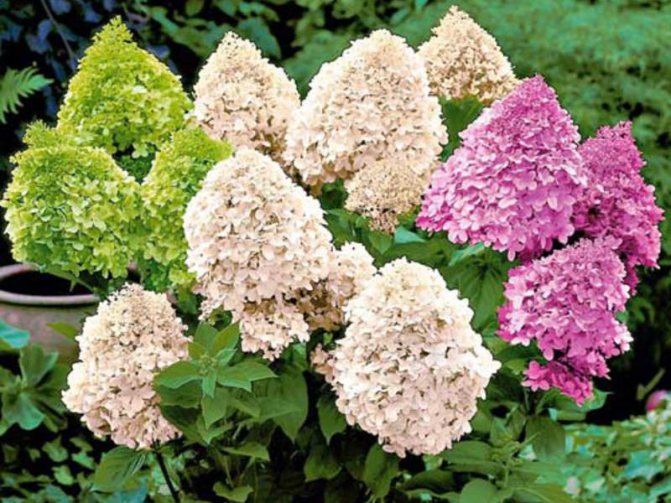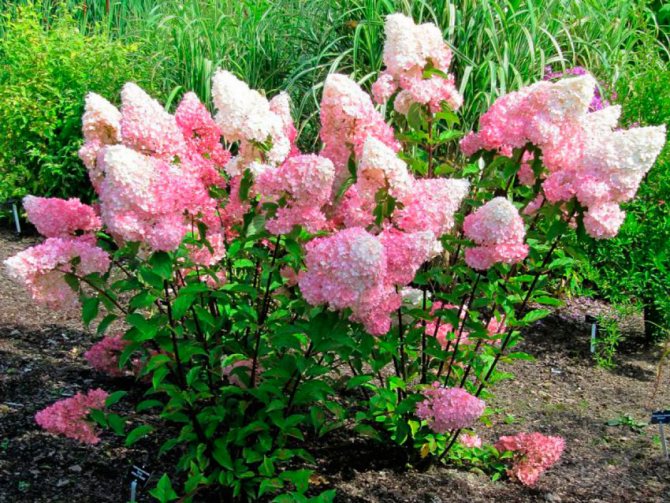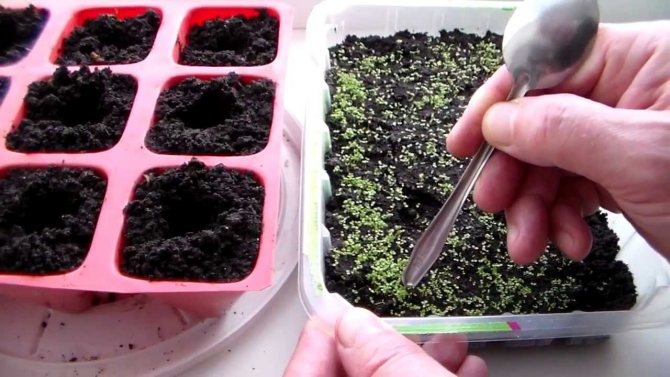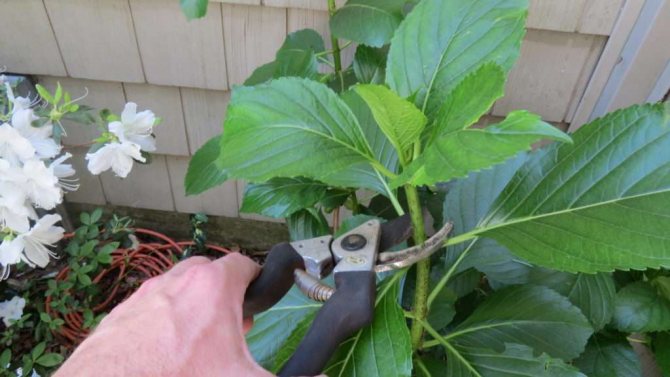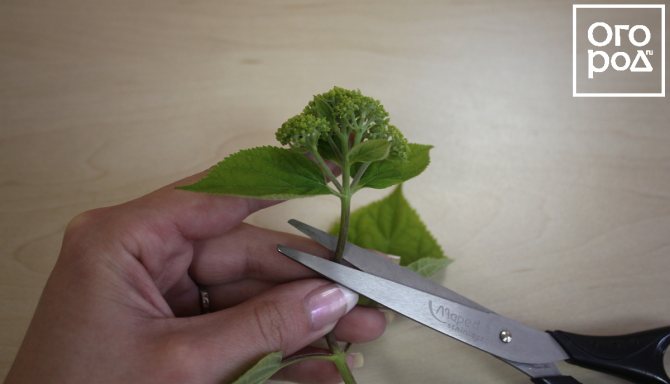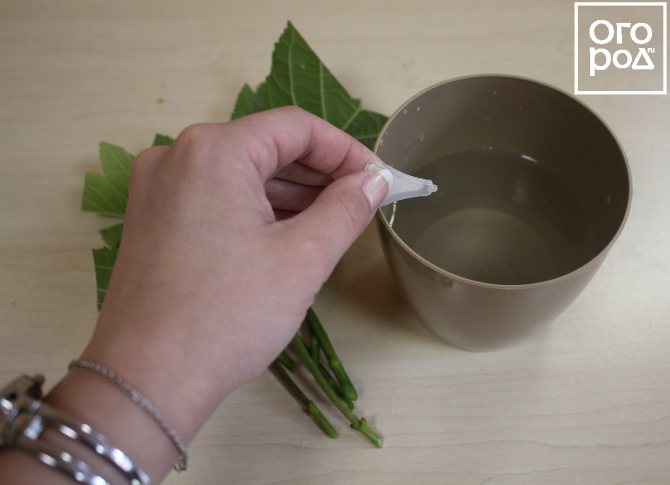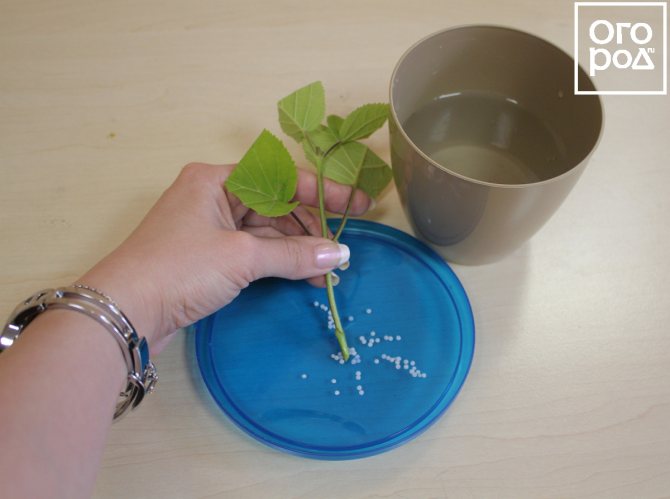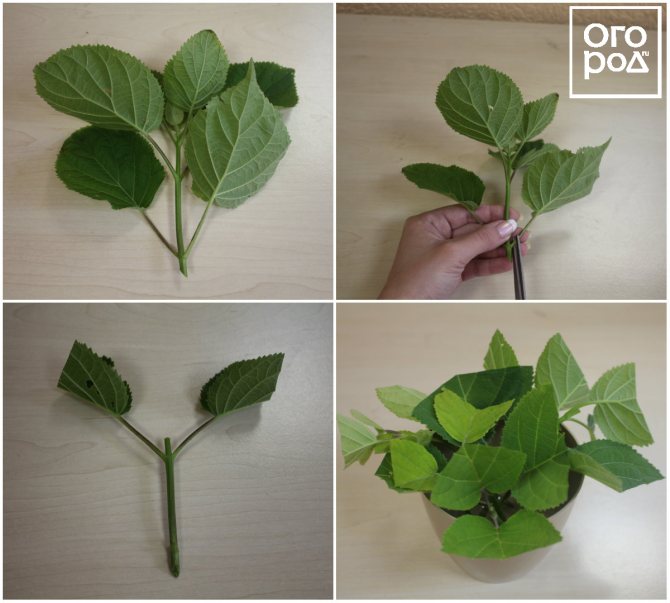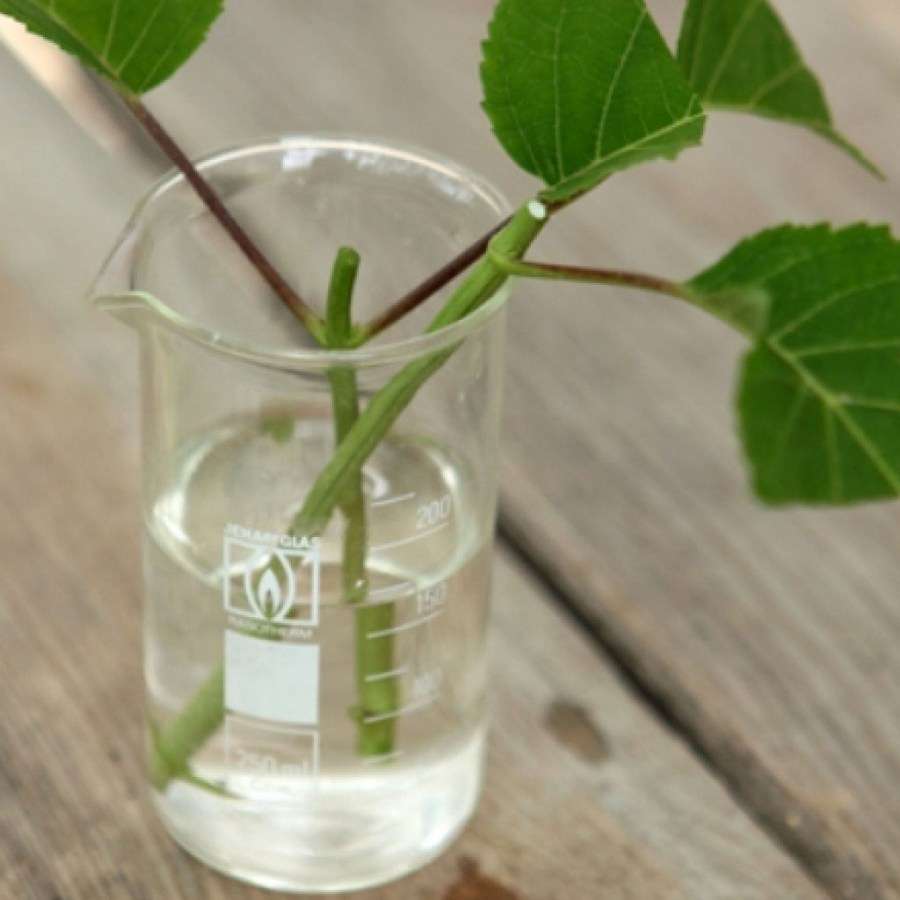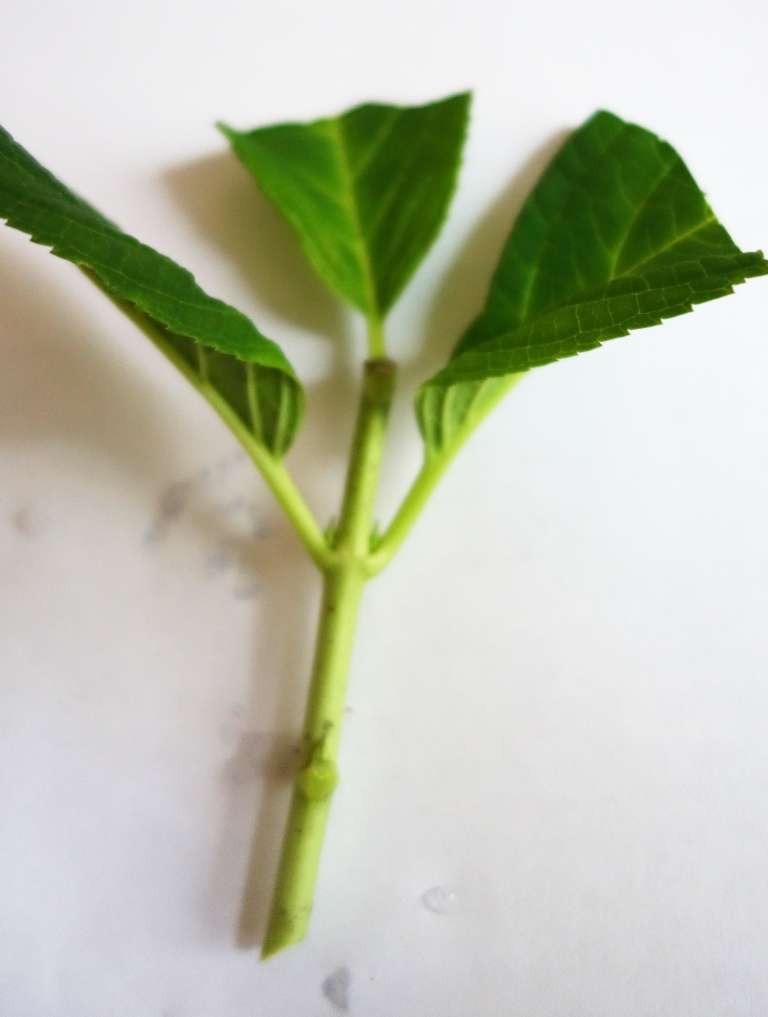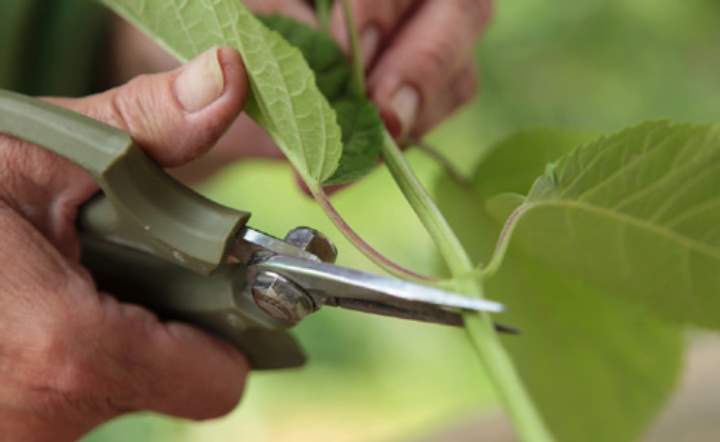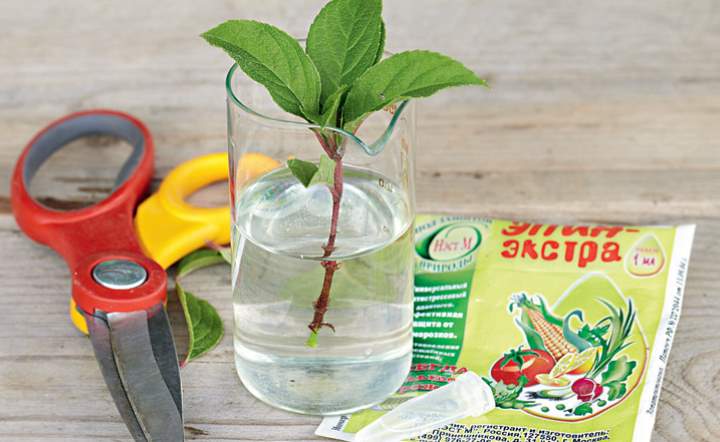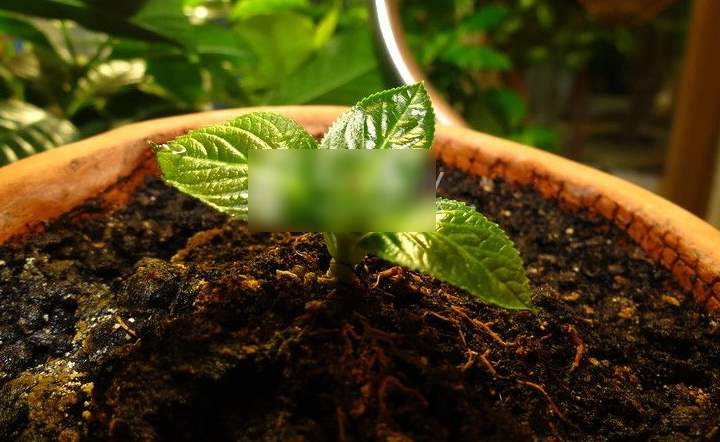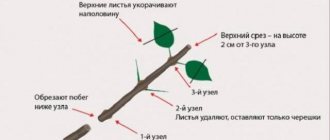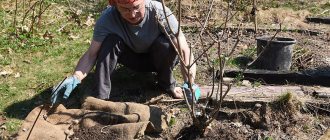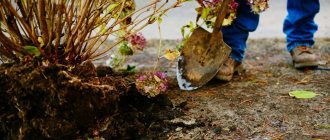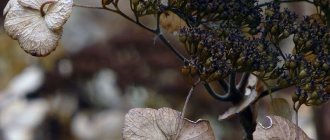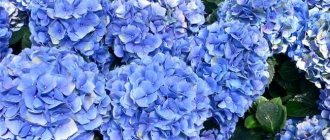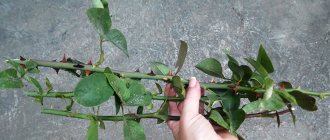The best time to breed different types of hydrangea
The breeding period of hydrangea paniculata depends on the method. The most popular way to cultivate a horticultural culture is cuttings.
It is important to consider that hydrangea has many varieties. There is a woody, paniculate, large-leaved culture. All species can be propagated by any means. In this case, certain features must be taken into account.
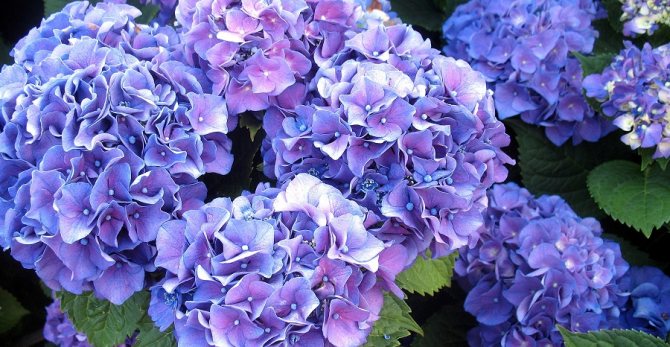
Hydrangea is a beautiful culture that is distinguished by its lush flowering
Treelike varieties suffer the least from low temperatures. Therefore, they can not be covered for the winter. Bushes should be planted in the shade or partial shade. Such varieties of hydrangeas are propagated by cuttings or layering. The seed method will take a very long time.
Paniculate varieties grow well, so you need to systematically prune them. The resulting cuttings can be used for propagation.
The large-leaved hydrangea is considered the most beautiful. At the same time, the plant is very moody. It can be propagated in different ways - by cuttings, seeds, dividing or layering.
Spring
In the spring, cuttings are carried out before the juices begin to move. The optimal time to complete the procedure is March. For rooting, shoots of last year's bushes are used, which had time to woody.
Summer
It is best to propagate hydrangea by cuttings in summer. In paniculate, large-leaved or tree-like hydrangea, buds appear by this time.
How to propagate hydrangea by cuttings in summer? For this purpose, use green cuttings with leaves and at least one bud.
Attention! Summer cuttings are carried out in June or July. Only young plants are suitable for this purpose.
Is it worth propagating in the fall
Autumn is suitable for cutting woody twigs. They are often pruned and sent to compost. Cultivation should be done in mid-September.
It is important that the stalk includes 3 knots. In this case, all the leaves must be cut off.
Description of culture
Botanical description of the plant:
- Root system. Fibrous roots, densely branched, form a wide and shallow root system up to 40 cm and fill the entire volume of the planting holes of the shrub.
- Large green leaves of the plant are oval in shape with sharp tops and small veins.
- Long bloom: early spring to late autumn.
- Variety of color shades: from white to dark purple.
- Various forms of inflorescences: in the form of a ball, panicle or umbrella.
- After flowering, instead of buds, fruits are formed in the form of a small box with several sections filled with small seeds.


Hydrangea
Hydrangeas in the form of a shrub or tree can grow in height from 1 to 3 m with a fairly wide rounded crown shape. Liana-like varieties grow up to 30 meters in length, this length is limited only by the height of the tree on which the liana hydrangea climbs.
On a note! There are deciduous or even evergreen varieties. In central Russia, deciduous hydrangea mainly grows.
What are the ways to propagate garden and indoor hydrangea
How to propagate hydrangea by cuttings in spring
To grow a new plant in the country, you need to choose the right method of reproduction.At home, the following methods are usually used:
- green cuttings;
- offspring;
- layering;
- seeds;
- dividing the bush.


Hydrangea can be propagated in many ways.
How to grow a hydrangea from a cutting
Many people are interested in how to properly cut a hydrangea. To carry out this procedure, you need to select healthy shoots and root them.
How to choose and cut a stalk
How to feed hydrangea in spring for lush flowering in the garden
It is best to carry out cuttings of panicle hydrangea in summer, when buds appear on the mother plant. For cutting, it is worth choosing young green shoots that have a flexible structure and grow in a lighted area. They should be at the bottom of the main part of the bush. Also, lateral annual shoots are suitable for cuttings.
Important! To achieve good results, it is recommended to take the upper cuttings of the shoots However, they should not be too thin, as there is a high likelihood of rotting.
When preparing cuttings, a sufficient amount of moisture must be retained in them in order to avoid irreversible changes. Therefore, experienced gardeners recommend adhering to these recommendations:
- Shoots to be rooted should be cut on a sunny morning or cloudy weather. After which they must be immediately divided into cuttings.
- Remove the upper fragments with buds.
- Divide the rest of the shoot into fragments with 2-3 pairs of leaves.
- Remove the lower leaves, and shorten the remaining ones by half or by a third.
- Soak the cuttings in a growth promoter. They must stand in it for 2 hours.
- Before planting, disinfect the upper part with brilliant green or garden varnish. You can also use charcoal.
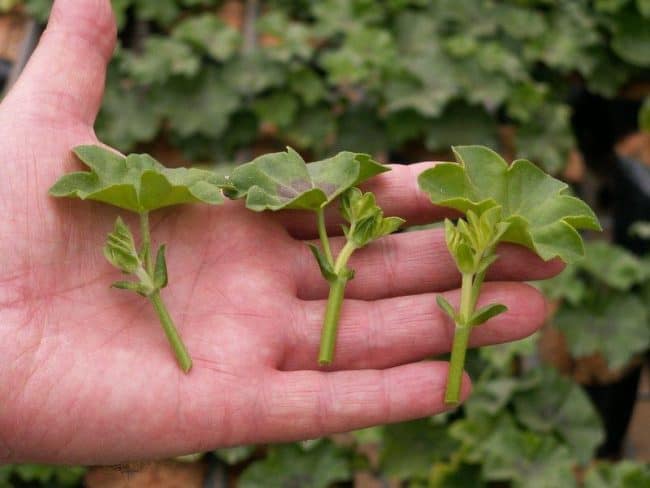

Hydrangea reproduces well by cuttings
How to get roots in water
At the initial stage of root formation, gardeners often soak the cuttings in water. The liquid should be soft with a minimum content of calcium salts. You can add a little growth stimulant to it. The length of the cuttings should be at least 10 cm. Moreover, they should contain 2-3 internodes.
When cutting hydrangeas, the foliage from the cuttings must be removed to stimulate the process of root formation. To root the plant, you need to use a transparent container, since the light promotes the formation of the root system.
Important! In most cases, up to 3 cm of roots appear on cuttings in 2-3 weeks. After that, they can be planted in the ground.
Propagation of hydrangea by cuttings is simple and affordable, but it has certain disadvantages. With a prolonged stay of cuttings in water, decay processes begin. Therefore, the water should be changed systematically, avoiding the appearance of a musty odor. To protect the cuttings from decay, it is worth placing activated carbon in the water.
How to root a cutting in the ground
To plant plants in the garden, you will need a light soil. To make it, you need to mix peat or humus with washed sand. These components are combined in a 2: 1 ratio.
In the resulting substrate, cuttings should be planted obliquely, deepening them by 2-3 cm.The plants should be planted at intervals of 5-7 cm.Then cover the substrate with a layer of sand 2 cm thick.
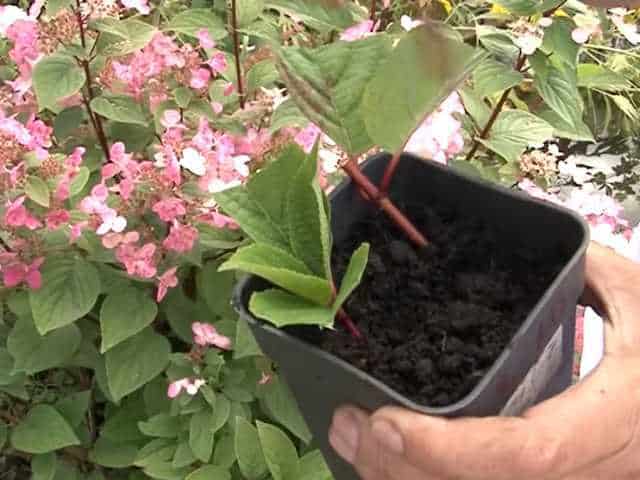

The stalk can be rooted in a special substrate
Soil preparation
The container for planting cuttings of paniculate hydrangea must have a high-quality drainage system, which will not allow excessive moisture to stagnate in the soil. In addition to the holes for the outflow of water, a water-permeable material (2-3 cm) is laid on the bottom of the container - small expanded clay or pebbles, coarse sand, etc.
The soil mixture for the propagation of hydrangeas is purchased at a gardening store or prepared independently. There are several options for a nutrient substrate for autumn cuttings of hydrangea:
- sifted river sand mixed with peat chips in a ratio of 1: 2;
- sod soil, peat chips and sand in a ratio of 1: 3: 4;
- mix garden soil, sand and pine needles in equal proportions. Additionally, a small amount of humus is added to the mixture.
The soil composition is poured into a box and tamped. It is preliminarily recommended to disinfect the soil by spilling it with a weak solution of potassium permanganate.
Propagation of hydrangea by dividing the bush
How to feed hydrangea - fertilizers for growth and lush flowering in the garden
This method is reliable and simple. However, it can only be used for shrub varieties. It is impossible to plant trees or vines in this way.
Seat selection
How to propagate hydrangea in this way? The division of the bush must be done in the spring. Thanks to this, by the fall, the fragments will be able to fully take root and adapt to winter. First you need to choose a landing site. The plant needs a well-lit area.
Then you need to dig out recesses for planting 50 cm in size.Organics and minerals should be added to each recess. For this, wood ash, peat, compost are suitable.
Step-by-step division process
To breed a culture, you need to do the following:
- Before digging up the bush, the soil must be thoroughly watered. This will make it easier to untangle the roots.
- Wash off the soil from the root system and divide into fragments.
- Plant the received fragments in the prepared places.
Water method of rooting
Hydrangea seedlings can be cut not only in soil, but also in water. The advantage of this method is that the gardener has the opportunity to observe the entire process of formation and development of the root system of the seedling and draw conclusions about the effectiveness of the event at the earliest possible date.
From the materials, you will need a suitable transparent container (jar), settled water (200 ml) and cinnamon (1 tbsp. L.). Follow-up actions are as follows:
- for a nutrient solution, stir cinnamon in warm water;
- prepared cuttings are placed in the aquatic environment, lowering them by 1/6 of the total length;
- no more than 3 processes are immersed in 200 ml of liquid;
- cuttings cut in the autumn, it is advisable to root in a darkened place, constantly monitoring the level of the solution. With active evaporation, it is topped up to the original level.
Cutting panicle hydrangea in water is complicated by frequent decay of the material. To avoid this, it is necessary to saturate the nutrient composition with oxygen daily.
When the root shoots of the seedlings reach a length of 2-3 cm, the cuttings are planted in a nutritious, slightly acidic soil. For this, small pots are suitable, which are placed in a warm, ventilated place for further development.
For planting in spring in open ground, the seedlings will be ready in 1-2 years. Before that, they must be prepared for natural conditions by gradually hardening the plants.
Growing hydrangeas from seeds
Many people are interested in how the garden hydrangea reproduces by the seed method. This method is considered to be quite time consuming. It should be borne in mind that the bush will not be able to bloom right away. This will take a long time.
Seed selection
First of all, you need to choose quality seeds. They must meet the following requirements:
- Nice appearance. The seeds must be whole and free from external damage.
- Absence of traces of diseases. The grains should not be sluggish or frozen.
- Varietal characteristics. It is imperative to ask the seller for this.
Plant propagation by seeds is considered an effective method. To achieve good results in growing a crop, it is worth following certain rules.


High-quality seeds are required to propagate a crop.
Sowing process
After purchasing the seeds, you need to start planting. They are performed immediately after the acquisition of seed.The grains should be germinated first. To do this, moisten cotton wool or cheesecloth with water and put the seeds on top. When they swell, planting work can be carried out.
When planting hydrangeas, you need to pay attention to the quality and composition of the soil. It should include sand, peat, turf, forest land and humus. After preparing the substrate, you need to take a small box, pour soil into it and lay out the seeds. Sprinkle a little earth on top.
Important! Landings must be immediately covered with glass. Periodically, it must be removed and the soil is sprayed with water.
Seedling and young bushes care
In order for a plant to grow and develop normally, it needs to be provided with full and high-quality care. When growing seedlings, the following features must be taken into account:
- Apply fertilizers in a timely manner. The best option would be special nutritional formulations that are sold in stores. It should be borne in mind that their use affects the color of the flower. If sulfur, aluminum salts or sulfate are added to the soil, the flowers will turn blue.
- Water the plant correctly. Excess moisture in the culture is contraindicated. In this case, the soil should not dry out. Hydrangea needs optimal moisture. Watering should not be intense. In this case, it is important to systematically moisten the soil.
- Take proper care of the soil. It is important to regularly clear the soil of weeds.
- Treat bushes from parasites. You should definitely pay attention to this point.
Important! In order for the hydrangea to grow and develop well, it must be cut off in a timely manner. In this case, it is recommended to get rid of old lifeless shoots.
The technology of propagation of hydrangeas by layering in spring
Hydrangea can be propagated by layering. The procedure is recommended to be carried out in early spring - before the appearance of the buds. First, the soil around the bush should be dug up, and then leveled well. Then make grooves with a depth of 1.5-2 cm and lay in them 1 shoot from the bottom of the bush.
To prevent the branches from straightening, they must be attached to the surface of the earth. To do this, you can use special slingshots. Sprinkle earth on top of the plant.
To make the roots appear faster, you can use a simple trick. To do this, on the layers in front of the lower first kidney, you need to make a constriction of thin wire. She needs to make 2-3 turns. As it thickens, the constriction will begin to press on the bark, which will lead to the formation of roots.
By the end of summer, several shoots should have formed on each layer. When these elements grow to 15-20 cm, they need to be hilled. After that, every 7-10 days, the procedure should be repeated. This must be done until the height of the hill becomes 20-25 cm.
In October, the layers need to be dug out and the fragments formed. Their height should reach 50 cm by this time.
Important! The seedlings must be dug in, and in the spring they must be moved to the garden bed. Only after a year will they be suitable for planting on a permanent site.
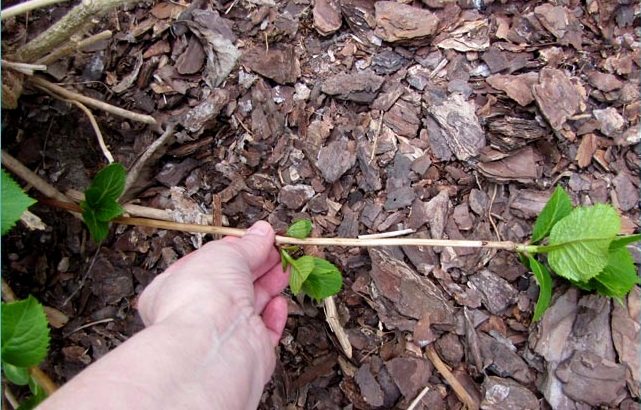

Hydrangea can be propagated by layering.
Rooted cuttings care
When roots appear on the cut material, it is taken out and placed in a nutritious substrate of garden soil, peat and sand (2: 2: 1). Planting is carried out in small pots, which are later set in a shady place. Further care is limited to systematic watering.
Planting in a permanent growing place is organized only next spring. Pre-hardening is carried out on a veranda, loggia or balcony.
Hydrangea is a lush bush with bright flowers in the form of large bunches. Many gardeners are engaged in breeding this type of garden plant and know that only strict adherence to the stages and rules will help to correctly reproduce hydrangeas in the fall.
Is it possible to root a hydrangea from a bouquet and get a young bush
Some people try to practice rooting hydrangeas from a bouquet.
However, experienced gardeners believe that this is very problematic. For the full reproduction of the bush in this way, the planting material must be harvested correctly, following a number of recommendations. But even with the right approach, the likelihood of success is minimal.
Hydrangea is a popular ornamental crop with excellent flowering. Therefore, the plant is often used in landscape design. To succeed in growing a crop, you need to properly care for it. For self-propagation of a plant, you can use different methods. Most often, gardeners use cuttings. However, it is also permissible to use the division of the bush or propagation by layering, offspring, seeds.
Landing rules
Planting the material harvested in August or September is carried out according to the following scheme:
- in the nutritious soil mixture, depressions of 3-5 cm are made, into which the prepared cuttings are placed;
- planting material is planted vertically, at a slight slope, the upper leaves should not touch the soil surface;
- the distance between the seedlings is 5-7 cm;
- the cuttings are sprayed with warm water, the soil is watered again so as not to wash the bottom of the shoot out of the soil;
- to create a greenhouse effect, the container is insulated with a film material, you can use cans that cover each stalk separately;
- watering of seedlings is carried out as needed, daily mini-greenhouses must be ventilated to prevent air stagnation;
- the approximate rooting time is 15-20 days, a positive result is recognized by the young leaves appearing on the cuttings.


